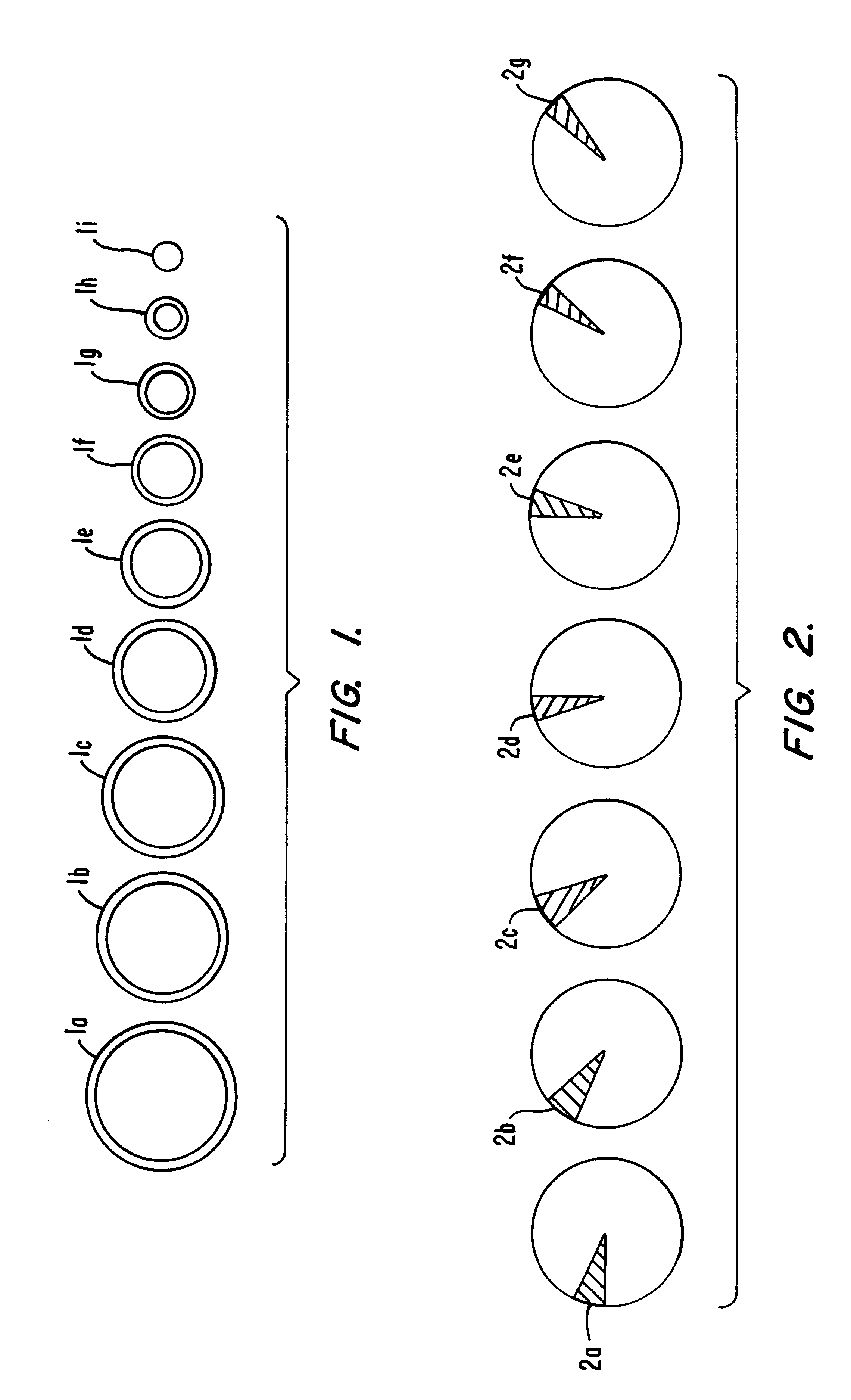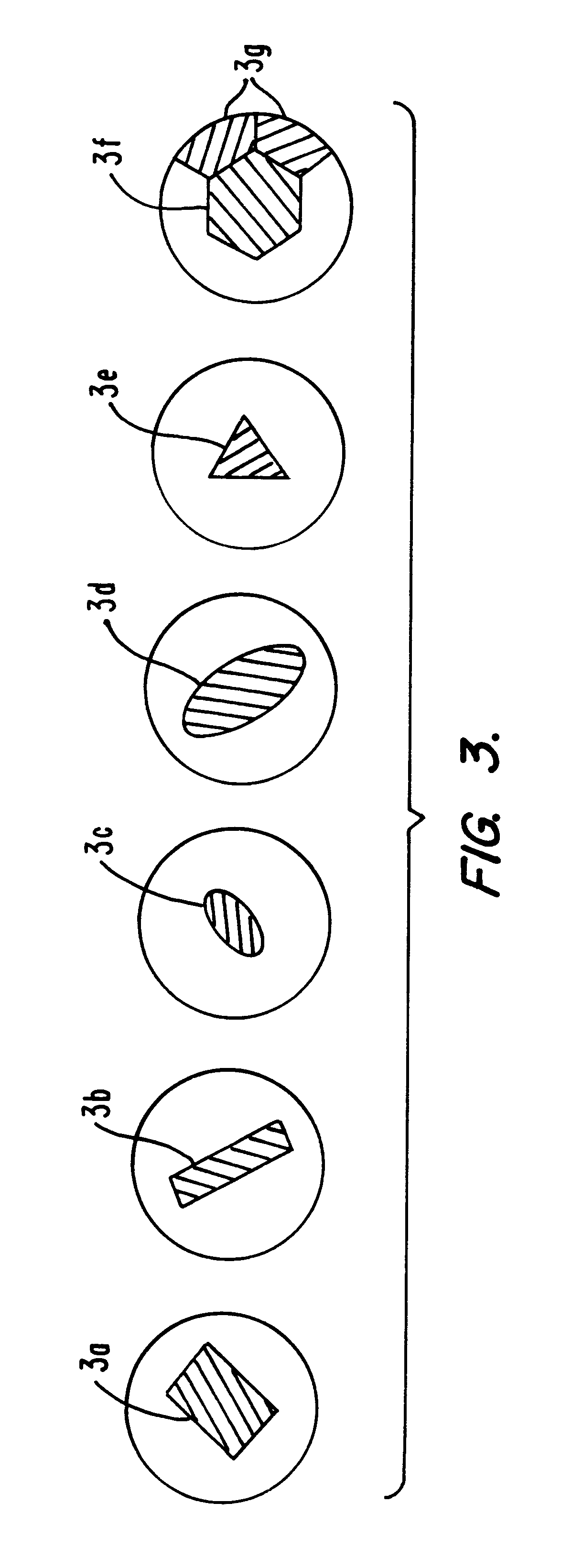Method for scanning non-overlapping patterns of laser energy with diffractive optics
a laser energy and diffractive optics technology, applied in the field of medical systems and methods, can solve problems such as uneven treatment profiles
- Summary
- Abstract
- Description
- Claims
- Application Information
AI Technical Summary
Benefits of technology
Problems solved by technology
Method used
Image
Examples
Embodiment Construction
Referring now to FIG. 1, the methods and systems of the present invention will preferably employ a plurality of annular beam geometries as illustrated in FIG. 1. Most simply, successive rings 1a-1i may be projected onto the corneal tissue, where the outer diameter of each successive beam (e.g., 1b) is equal to the inner diameter of the previous beam (e.g., 1a). The final beam 1i will then cover the entire opening from the previous beam 1h. While it will usually be preferred to use a series of such successive, non-overlapping annular beams, it will also be possible to employ beams which overlap in a predictable manner so that the total dosage of ablative light energy to any point on the cornea can be controlled. It may also be possible to employ annular beam shapes that are elliptical, or having some other non-circular peripheral geometry.
As an alternative to the annular beam geometry shown in FIG. 1, the methods and systems of the present invention could project pie-shaped beams 2a-...
PUM
 Login to View More
Login to View More Abstract
Description
Claims
Application Information
 Login to View More
Login to View More - R&D
- Intellectual Property
- Life Sciences
- Materials
- Tech Scout
- Unparalleled Data Quality
- Higher Quality Content
- 60% Fewer Hallucinations
Browse by: Latest US Patents, China's latest patents, Technical Efficacy Thesaurus, Application Domain, Technology Topic, Popular Technical Reports.
© 2025 PatSnap. All rights reserved.Legal|Privacy policy|Modern Slavery Act Transparency Statement|Sitemap|About US| Contact US: help@patsnap.com



